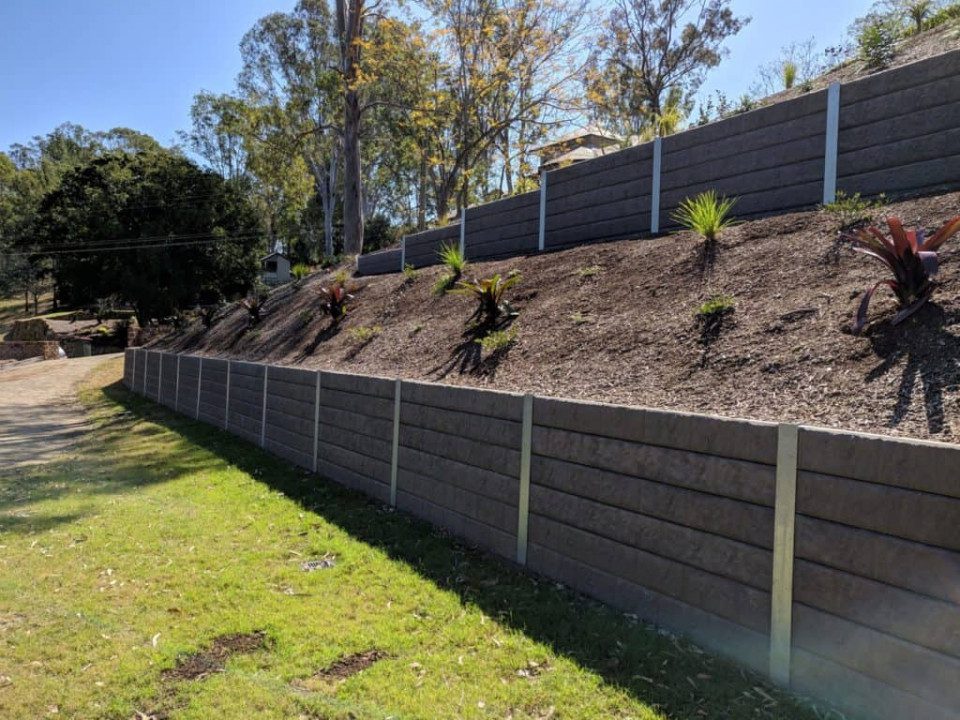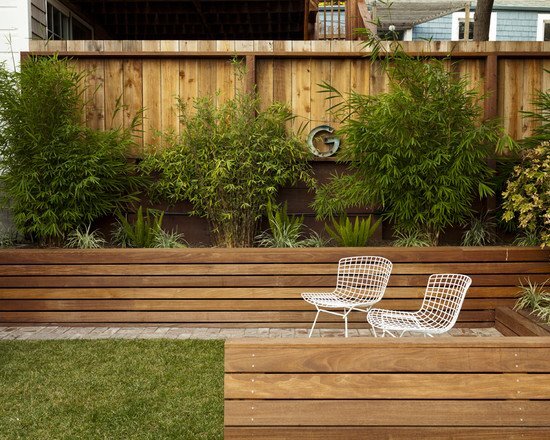Selecting the Right Products for Retaining Walls Sunshine Coast Projects
Selecting the Right Products for Retaining Walls Sunshine Coast Projects
Blog Article
Guaranteeing Structural Stability: The Relevance of Effectively Created Retaining Wall Surfaces in Protecting Against Slope Failure
In the realm of civil engineering and construction, the importance of effectively created preserving wall surfaces in avoiding incline failing can not be understated. These structures act as essential safeguards against the natural forces that can destabilize slopes and cause possibly tragic effects. Recognizing the meticulous style considerations, building approaches, and maintenance techniques connected with retaining wall surfaces is fundamental in guaranteeing their efficiency and longevity. By checking out the intricate interaction between these components, a much deeper comprehension of the critical function that maintaining walls play in maintaining structural integrity and stopping slope failure emerges. Retaining Walls Sunshine Coast.
Duty of Retaining Walls in Stability
The necessity of keeping wall surfaces in making certain incline stability is critical in civil engineering techniques. Preserving walls serve a vital role in stopping dirt erosion, taking care of water drainage, and maintaining the architectural honesty of inclines. By sustaining near-vertical or upright grade modifications, maintaining wall surfaces help to rearrange lateral stress put in by the soil, consequently minimizing the risk of incline failure.
One key feature of preserving wall surfaces is to counteract the pressure of gravity acting upon the soil mass behind them. This is achieved through appropriate style and building and construction, which takes into consideration variables such as soil type, wall elevation, drain provisions, and prospective surcharge loads. By efficiently keeping soil within defined boundaries, these structures help to support slopes and prevent landslides.
In addition, preserving walls add to the aesthetics of landscapes while offering useful benefits. They can create terraced degrees for landscape design, assistance roadways or structures on hillsides, and improve the general usability of sloped surface. Basically, keeping walls play a crucial duty in maintaining incline stability and making sure the safety and security and durability of civil engineering tasks.
Elements Influencing Wall Surface Performance
Aspects that affect the performance of retaining wall surfaces include dirt properties, wall surface layout, and external lots. Soil residential properties play a critical duty in figuring out the stability and performance of a preserving wall. Elements such as dirt type, cohesion, internal friction angle, and groundwater problems can influence exactly how well a wall retains the dirt behind it. The layout of the preserving wall surface is one more key element that influences its performance. Proper wall style thinks about aspects like wall surface elevation, wall kind (e.g., gravity walls, cantilever walls), support products, drainage systems, and building and construction techniques to make sure the wall surface can hold up against the side stress exerted by the maintained soil. Additionally, outside tons, such as additional charge loads from nearby frameworks or website traffic, seismic pressures, and water stress, must be meticulously evaluated during the design and construction stages to guarantee the wall can sufficiently withstand these exterior pressures. By taking into consideration these factors comprehensively, engineers can construct keeping walls that efficiently avoid slope failure and make sure lasting structural stability.
Design Factors To Consider for Retaining Walls
Including the crucial aspects of dirt homes and outside tons right into the architectural design process is vital for developing effective keeping walls that ensure incline stability. When designing keeping wall surfaces, engineers must meticulously evaluate the characteristics of the surrounding soil, including its compaction, type, and water drainage buildings. Comprehending these dirt buildings is vital for establishing the appropriate wall height, thickness, and reinforcement needed to stand up to the lateral stress put in by the dirt mass.
Additionally, external loads such as surcharge tons from nearby frameworks or website traffic, as well as seismic forces, should be thought about throughout the layout stage. These lots can significantly impact the stability and performance of a keeping wall surface, requiring making use of appropriate style techniques and products to minimize prospective failure risks.
Furthermore, the choice of appropriate materials, such as concrete, rock, or wood, ought to straighten with the visual requirements and site-specific problems. Element of security factors to consider, water drainage provisions, and construction techniques are also essential facets that influence the overall layout and capability of preserving wall surfaces in protecting against slope failure. By meticulously thinking about these style their website considerations, engineers can ensure the structural stability and long-lasting stability of keeping walls.

Construction Best Practices for Durability
When building maintaining walls click here for info for optimum longevity and durability, adherence to industry-standard home methods and precise attention to information are vital. To make sure the sturdiness of a keeping wall, proper site preparation is essential.
Including support strategies, such as geogrids or steel bars, can improve the structural honesty of the retaining wall surface and stop potential failures. Correct backfilling treatments, consisting of compaction and drainage factors to consider, are additionally important for the wall's resilience. Normal maintenance and inspections are suggested to address any kind of signs of wear, disintegration, or structural concerns without delay. By following these building and construction ideal methods, preserving wall surfaces can endure the test of time and successfully avoid slope failing.
Importance of Proper Maintenance
Regular maintenance is vital for protecting the architectural stability and performance of maintaining wall surfaces over time. To make sure that maintaining wall surfaces proceed to execute their desired feature properly, normal assessments must be carried out to determine any indications of wear and tear.

Final Thought
Finally, keeping wall surfaces play a crucial duty in ensuring structural integrity and preventing incline failure. By thinking about variables affecting wall surface performance, sticking to design considerations, following construction ideal practices, and implementing proper maintenance, the sturdiness of retaining wall surfaces can be made the most of. Retaining Walls Sunshine Coast. It is crucial to acknowledge the value of correctly built retaining wall surfaces in preserving stability and avoiding potential risks related to slope failing
Elements that affect the performance of retaining walls include soil properties, wall layout, and outside tons. Appropriate wall style takes into consideration aspects like wall surface height, wall surface type (e.g., gravity walls, cantilever walls), reinforcement materials, drain systems, and building methods to make sure the wall surface can endure the side pressure applied by the retained dirt. By taking into consideration these aspects comprehensively, engineers can build retaining walls that efficiently prevent incline failure and make sure long-term architectural integrity.
Maintenance jobs may consist of clearing drainage systems to stop water build-up behind the wall surface, repairing any type of noticeable cracks or damages, and guaranteeing that the wall is cost-free from plant life that can put in pressure on the structure. By taking into consideration factors affecting wall effectiveness, adhering to design considerations, adhering to building ideal techniques, and executing correct upkeep, the toughness of maintaining walls can be made best use of.
Report this page